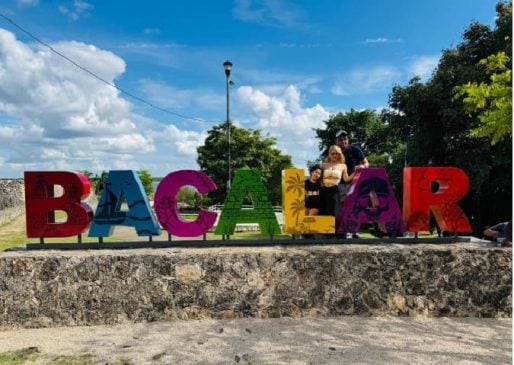Bacalar, Q.R. — Authorities continue their monitoring of an evasive bottom feeding fish that has been found in southern state waters. Environmental organizations are continuing their work after the discovery of devil fish in the Xul-Ha Lagoon.
The invasive fish was first found in the 42 kilometer long lagoon system in February of this year. Since then, monitoring has been carried out due to its invasive nature.
The Institute of Biodiversity and Protected Natural Areas (Ianqroo), in coordination with the City Councils of Othón P. Blanco and Bacalar, the Aak Mahahual AC Project and the Xul-Ha Hoteliers Association, are working together to take action on the presence of the devil fish in the Xul-Ha Lagoon.
“A coordinated nighttime prospecting dive was conducted in the Xul-Ha Lagoon where fortunately, no devilfish were observed,” Ibanqroo said.
An informational meeting was also held with key stakeholders and tourism service providers in the town of Xul-Ha to discuss the biological and ecological aspects and threats posed by this invasive species.
In addition, agreements were reached on monitoring, dissemination, and inter-institutional coordination.
These actions confirm the importance of strengthening and inter-institutional work to gain allies on this environmental issue and thus form a network of collaborators, led by municipal, state, and community authorities.
Instituto de Biodiversidad y Áreas Naturales Protegidas (Ibanqroo) invites the public to report the presence of the devil fish to the Bacalar Ecology and Environment Subdirectorate, through the numbers 983 155 5898 or 983 106 9565.
Devil fish have been present in Quintana Roo waters since at least 2021. They are generally referred to as fish tank cleaners because they feed on algae and food waste, said Martha Valdéz, Specialist in aquatic systematics and ecology at Ecosur.
“It’s an aquarium fish. They’ve been sold in aquariums. Why? To clean algae from fish tanks, but we’ve already seen that it can grow up to 30 cm. It’s an exotic species with a high potential to become invasive,” she explained.
It is known as the devil fish because it currently has no natural predators.
According to specialists, devil fish are bottom feeders that burrow and create small caves which affects living fossils and is the main concern of its destruction throughout the Bacalar lagoon system.


